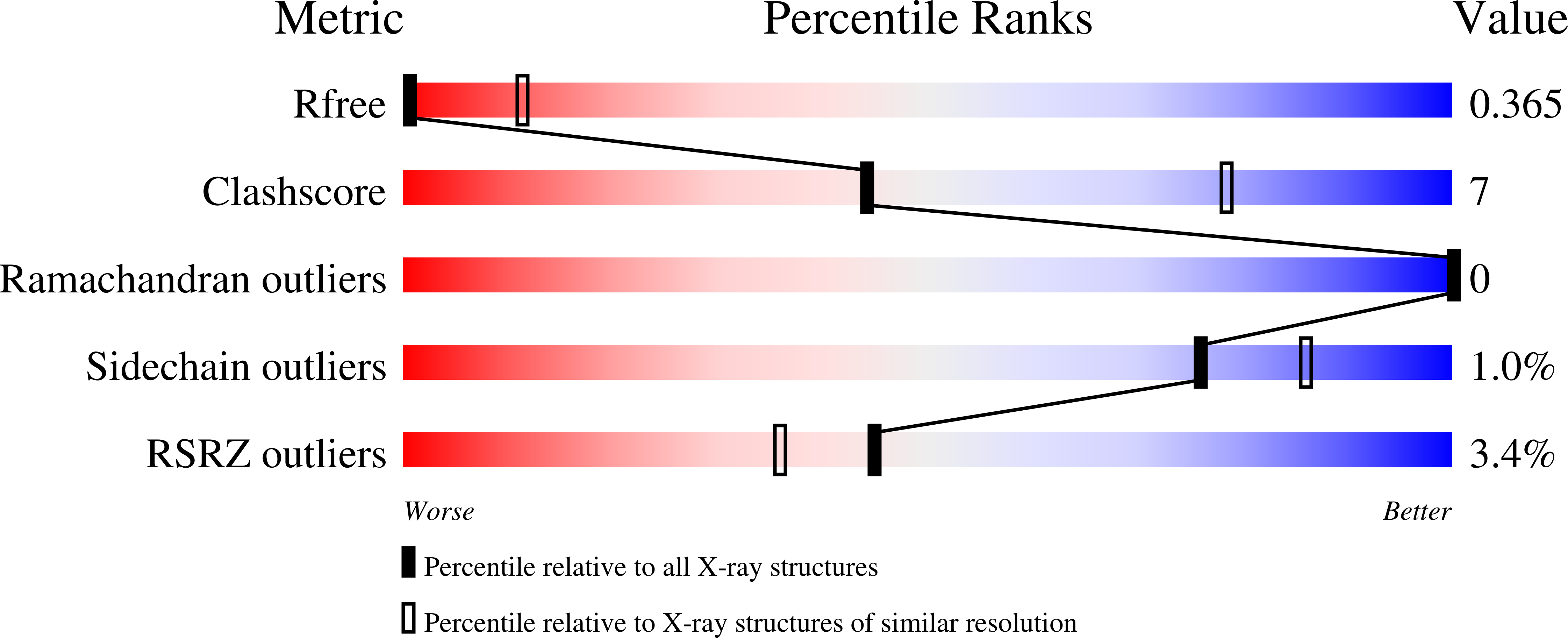Photocyclic behavior of rhodopsin induced by an atypical isomerization mechanism.
Gulati, S., Jastrzebska, B., Banerjee, S., Placeres, A.L., Miszta, P., Gao, S., Gunderson, K., Tochtrop, G.P., Filipek, S., Katayama, K., Kiser, P.D., Mogi, M., Stewart, P.L., Palczewski, K.(2017) Proc Natl Acad Sci U S A 114: E2608-E2615
- PubMed: 28289214
- DOI: https://doi.org/10.1073/pnas.1617446114
- Primary Citation of Related Structures:
5TE3, 5TE5 - PubMed Abstract:
Vertebrate rhodopsin (Rh) contains 11- cis -retinal as a chromophore to convert light energy into visual signals. On absorption of light, 11- cis -retinal is isomerized to all- trans -retinal, constituting a one-way reaction that activates transducin (G t ) followed by chromophore release. Here we report that bovine Rh, regenerated instead with a six-carbon-ring retinal chromophore featuring a C 11 =C 12 double bond locked in its cis conformation (Rh6mr), employs an atypical isomerization mechanism by converting 11- cis to an 11,13- dicis configuration for prolonged G t activation. Time-dependent UV-vis spectroscopy, HPLC, and molecular mechanics analyses revealed an atypical thermal reisomerization of the 11,13- dicis to the 11- cis configuration on a slow timescale, which enables Rh6mr to function in a photocyclic manner similar to that of microbial Rhs. With this photocyclic behavior, Rh6mr repeatedly recruits and activates G t in response to light stimuli, making it an excellent candidate for optogenetic tools based on retinal analog-bound vertebrate Rhs. Overall, these comprehensive structure-function studies unveil a unique photocyclic mechanism of Rh activation by an 11- cis -to-11,13- dicis isomerization.
Organizational Affiliation:
Department of Pharmacology, School of Medicine, Case Western Reserve University, Cleveland, OH 44106.















